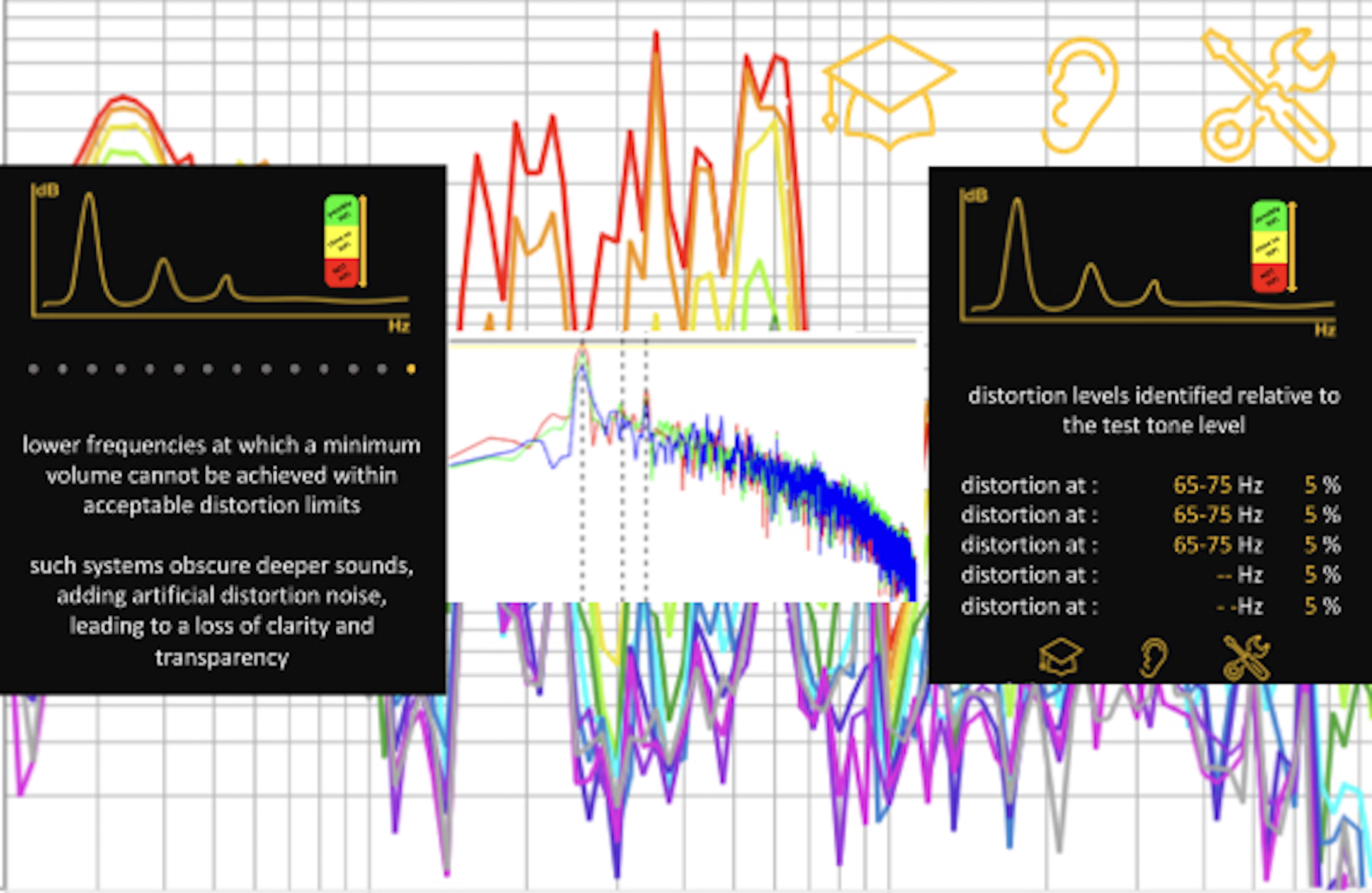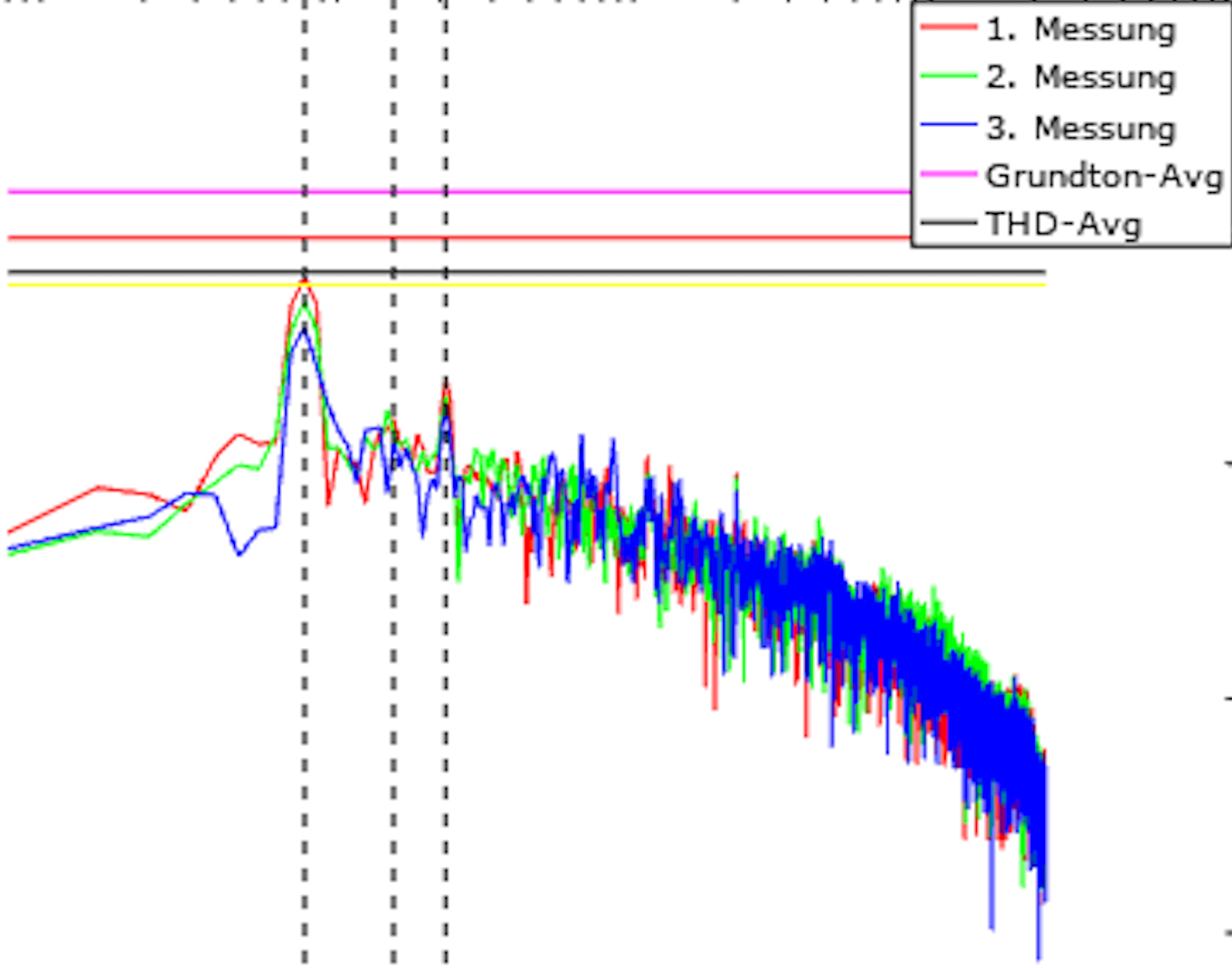
Flaws in audio systems – loudness at harmonic distortion limit
![]() Text to speech – TestHiFi blog: Flaws in audio systems – loudness at harmonic distortion limit
Text to speech – TestHiFi blog: Flaws in audio systems – loudness at harmonic distortion limit
Theory explanation 
Systems that produce too many distortions especially when playing lower frequencies at higher amplitude levels.
Some audio systems add distortion to the sound by themselves, which sounds very odd and can dramatically alter the sound of the input music. Those are bad, not tolerable distortion.
Good or natural harmonic distortion
All tones we hear consist of a fundamental frequency and additional harmonic frequencies. A violin and a flute do not sound the same, even when they play the same note equally loudly. The difference in their instrumental typical sound characteristic arises from the fact that every note on any musical instrument consists of not just one frequency, but a combination of the fundamental and its overtones, its harmonics. Therefore harmonics are an inevitably and good thing. A fundamental frequency of 100Hz, played by a bass instrument, comes with its 2nd harmonic frequency of 200Hz, 3rd of 300Hz, 4th of 400 Hz and so on, its always a simple multiple. Those harmonics are fare less loud than the fundamental and their loudness further decreases from lower to upper harmonics.
In some cases artists use purposely harmonic distortion to create special sounds. Rock guitars are most famous for this special and extensive distortion sounds.
Any sound generating system, be it an instrument or an audio system, generates harmonics to any played fundamental frequency. An audio system plays out the original tone with its harmonics even though, if the input signal is a pure sine wave, without any harmonics. The audio system plays back any input signal, be it one single sine wave or be it a complex music signal consisting of many waves mixed, added with the harmonics by the audio system itself. This happens to the fundamental tones of the input signal but also to the harmonics of the input signal.

fundamental, 2nd and 3rd harmonics are indicated with a dotted line
Bad or artificially added distortion
Whereas most harmonic distortion are not bad at all, some audio systems generate too many distortion by themselves. Such audio system generated distortion can be up to a scale that they are even louder than the original tone, the fundamental they are added to. Audio systems, if used at or above their performance limits (clipping), can generate an exorbitant high level of artificial distortion to their playback. This happens more often to lower frequencies. Audio systems have a flaw if they add such significant distortion levels.
Loudness at harmonic distortion limit
Systems that cannot generate a minimum low frequency level within acceptable distortion limits obscure deeper sounds, adding artificial distortion noise, leading to a loss of clarity and transparency.
Impact on listening 
Music is emotions. Artists invest their effort in perfection of the emotions transmitted by their music. Audio systems that generate lots of distortion will alter those emotions transmission, respectively the intend of the artist.
Higher degree of distortion might be easily identified by listening, where as lower degree will disturb, tire or stress the listener over time.
The easiest way to imagine and experience how such distortion sound, is listening to heavy metal rock guitars, when they do not play very clean and clear but overly distort on purpose their sound. This general effect is kind of similar to high level of artificially added distortions by an overstrained audio system. An audio system can be overstrained for lower frequencies much earlier than for higher frequencies, even with a volume-control that is not at full scale.
Consider a part of music, that consists of a bass-guitar playing a D note at about 73Hz, followed by 3 times a kick-drum boosted in mixing at around 70Hz. This should sound like a softer, continuing bass accompanied with 3 short but loud kicks. If significantly distorted it could sound like one deep loud humming with a kind of wave form through the 4 tacts. One might not hear the details anymore, within the hum.
What can I do? When … an audio system 
… buying …
This is an utmost important criteria when buying a system. A system that artificially adds distortion at listening levels, will continue to do so. The type of flaw is severe and very difficult if not impossible to fix.
Know what distortion sounds like before you buy a system. Specification details might not prevent you from being mislead. They are hardly to understand and have to be read and understood in context.
Listen, for instance to music with distorted rock guitars, to learn how distortion sound like. Listen to some deep frequencies played on a rather small speaker. Observe how those frequencies become more muddy and hum when carefully increasing the loudness. Before buying a sound system compare the sound to a rather better one. Just to be sure that the one you want to buy does not sound much more muddy or less detailed, especially in the bass region.
Distortion levels, also for individual lower frequencies at higher levels, should stay clearly below 5%.
… setting up …
If the system adds lots of distortion at listening levels, there is not much you can do about it. Some systems add distortions when they are overstrained. This holds true for every component in the whole audio system. Make sure non of the components of your system with independent volume-control is overstrained.
… listening to …
If the system adds lots of distortion at listening levels, there is not much you can do about it. It might help, to listen at lower levels. That might prevent overtraining the system.